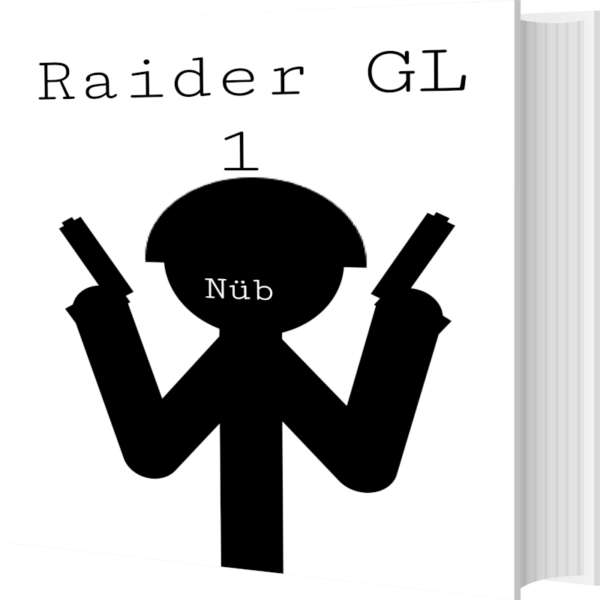@12:16 AM EST
Description
#NÜÜBCo #NÜÜB #Nüübco #Nüüb #nüübco #nüüb #NUUBCo #NUUB #NuubCo #Nuub #nuubco #nuub #superhero #superheroes #shortstory #shortstories #shortsuperherostory #shortsuperherostories #superherostory #superherostories #superheroshortstory #superheroshortstories #RaiderGL #sidestory #RaiderGLsidestory
Raider GL Side Story #3: The Marksman of Meyers Road
Armstrong lives a disciplined, solitary life at 4109 Meyers Road in Triangle, Virginia. Stationed at MCB Quantico, he forgoes distractions in favor of intense physical training and precision marksmanship at home. His backyard is a private range, rigged with swinging targets and obstacles, where he trains daily with a rotating arsenal of pellet guns. A deadshot with near-mythic accuracy, Armstrong logs every shot and treats each session as preparation for the unknown. While neighbors whisper about his skills, he remains silent, focused, and relentlessly dedicated to self-mastery. For Armstrong, true combat readiness isn’t forged on the battlefield—it’s earned in the shadows of home.
Buy
Raider GL Volume 1
Buy all 6 Volume 1 ebooks – Use code BUNDLE6 at checkout for 25% off – valid for 14 days only! Offer expires on 08/31/2025.
Follow
- NÜÜB Co. Chatroom: https://www.nuubco.com/chatroom/
- NÜÜB Co. Blog: https://www.nuubco.com/category/blog/
Support
- PayPal: [email protected]
Transcript
Raider GL Side Story #3: The Marksman of Meyers Road
At 4109 Meyers Road in the quiet enclave of Triangle, Virginia, the rhythmic hum of crickets was often accompanied by the sharp, unmistakable thwack of pellet fire punching clean through a soda can, a paper bullseye, or a custom-made silhouette target strung between the pine trees. Here lived Armstrong, a man forged in discipline, precision, and an ironclad ritual of repetition. His neighbors knew little about him beyond the occasional glimpse of his lean, muscular frame during early morning runs or the low whine of a weighted sled dragging across the gravel behind his house. But anyone who paid close enough attention would notice the steady routine of a man fine-tuning his body and mind like a weapon.
Stationed just up the road at MCB Quantico, Armstrong didn’t spend much time at the bars or movie houses that drew other Marines into town. He preferred the solace of his home and the quiet resistance of his weights, ropes, and makeshift obstacle courses. His garage had been converted into a hybrid gym and armory, a place where iron met steel and steel met accuracy. The back wall, once hung with tools and gardening supplies, now bore rows of precisely maintained pellet guns—spring-loaded, CO2, break-barrel, PCP—each with its own quirks, strengths, and purpose. To Armstrong, they weren’t just tools; they were extensions of his focus, tests of his patience, and companions in his solitary pursuit of perfection.
He didn’t shoot for fun—though some might have thought so. To Armstrong, each shot was an equation: wind, humidity, barrel type, pellet weight, range, angle, and breath control. He logged every session in a thick, weathered notebook. Targets hung in a network of cords strung between tree limbs, old tires, and salvaged plywood. Some swung; others spun. He trained not just for bullseyes but for the unpredictable—moving targets, multiple threats, surprise engagements. Each session began and ended the same: silence, focus, execution.
The neighbors had grown used to the soft crack of pellet fire, thinking little of it, though local kids whispered stories about how he could hit a bottle cap from fifty yards while blindfolded—claims Armstrong neither confirmed nor denied. A few had seen him hit a rolling soda can from his porch without missing a beat in conversation. Others swore he could reload in the dark, assemble his weapons by touch, and hit a matchstick at ten paces. Legends bloomed like weeds around his modest property, especially after dusk when the flicker of his backyard floodlights signaled another round of training under the stars.
Despite the speculation, Armstrong kept to himself. He didn’t boast, didn’t compete, didn’t explain. But he noticed everything. Every squirrel that scampered through his periphery. Every change in the wind’s behavior between the two poplars by his shed. Every imperfection in his trigger pull.
On weekends, when the Quantico base quieted and the others sought rest or distraction, Armstrong doubled down. Sunrise to sundown, he trained—his body under tension, his eye behind the sights, his mind locked in. He cycled through routines with military precision: compound lifts in the morning, core and endurance circuits mid-day, followed by marksmanship drills until his hands were too tired to hold steel.
Sometimes, late at night, after the final shot and cleanup, Armstrong would sit on his back steps, drinking beer. He didn’t need noise, didn’t crave recognition. What he sought was mastery—of himself, of his tools, of every possible variable that might one day separate survival from failure.
People often assumed the battlefield was where warriors proved their worth. But for Armstrong, the proving ground was right there on Meyers Road—amid the crunch of gravel under his boots, the clink of weights hitting the mat, and the whispering flight of a pellet slicing clean through the air.
To those who knew, Armstrong wasn’t just a shooter.
He was the storm you didn’t see coming.
Read More


